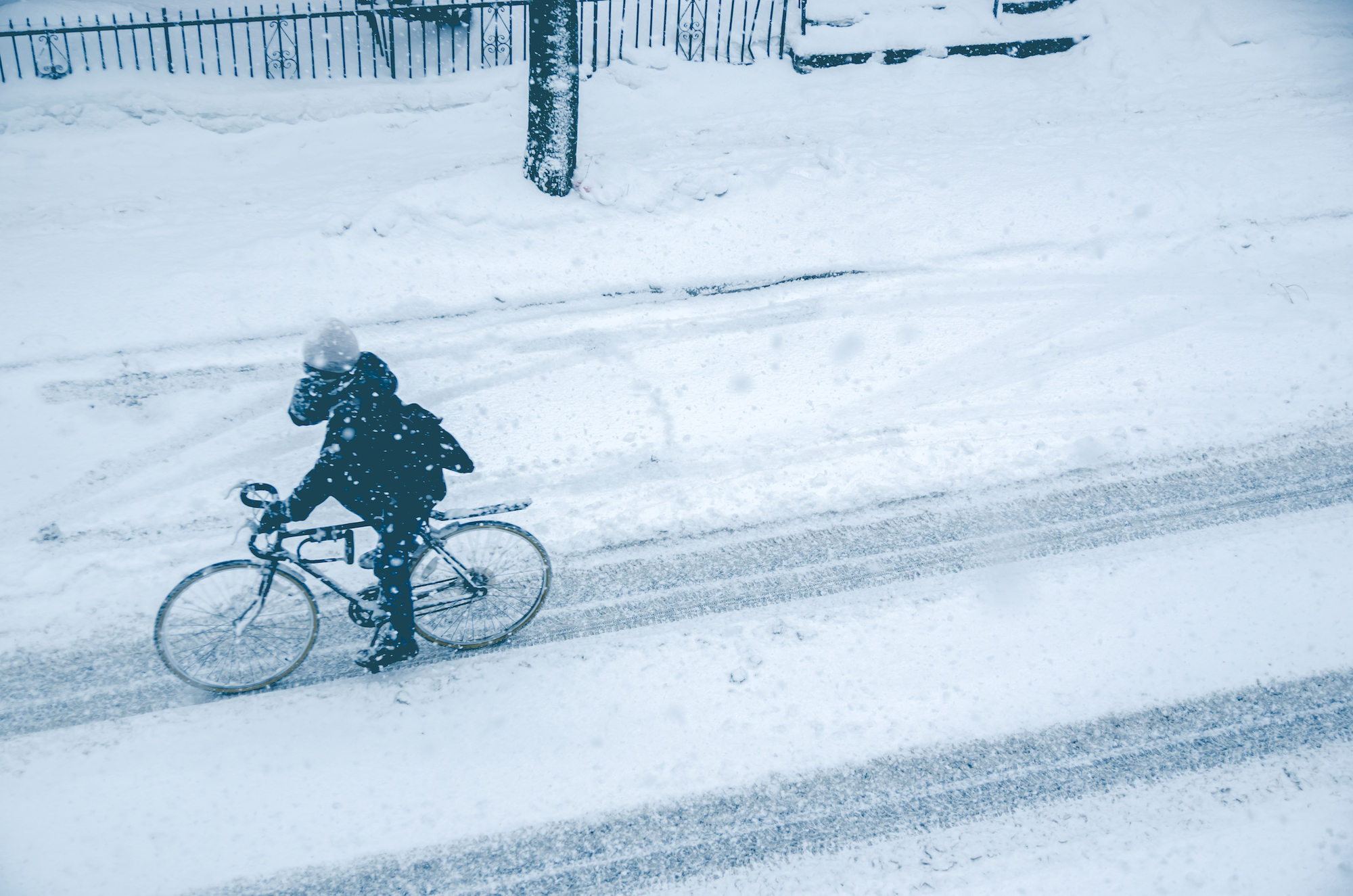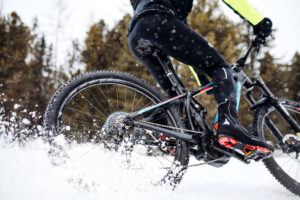As the temperatures drop and winter sets in, it’s time to decide if you will continue cycling in the colder months. Winter rides can be enjoyable, as long as you stay safe with the conditions. In order to successfully ride during the winter, you need to winterize your bike, make different clothing choices, and adjust how you ride. Here’s more information:
How to Get Ready for Cold Weather Biking
Preparing for a change of seasons means adjusting your bike and the gear you wear to ensure a comfortable trip once the weather turns wintery.
- Swap Tires. This may not work for every rider, but for those riding over heavily iced, snowy or slushy roads, consider switching out thinner road tires for sturdier fat tires. By maintaining more contact with the road, fat tires can help you maintain balance and control when riding through ice or snow on the roadway.
- Add Cold Weather Gear. When the temperature drops, make sure your gear also changes. Starting off with a lightweight jacket or a headband to keep ears warmed against chilly air may be the perfect transition from warm to cold weather. Once the wintery weather has set in for good, consider preparing rain gear and gloves as well as layering so you can adjust along the way. A warmer helmet is also a good investment for cold-weather bikers.
- Increase Visibility. As the days shorten, bike riding becomes more dangerous because the waning daylight and cloudy conditions may make riders hard or impossible to see. Integrating a brighter headlight on your bike will alert drivers of your presence after dark, and increasing the reflectiveness of your clothing, helmet or bike will add another protective aspect to make nighttime rides safer.
Acclimate to the Weather
The weather can change overnight in the winter. Take a conservative approach to winter riding when the seasonal weather first arrives for maximum safety. Roads coated in winter precipitation can be challenging to ride through, with tires often making less contact with a solid surface. Taking it slower than normal for the first few rides with snow or ice on the ground will help you acclimate to changing conditions and help prevent unnecessary damage to you or your bike. You will also need to select the right clothes for colder conditions.
Adjust How You Ride for the Winter
Sometimes the bike lanes are coated with dangerous ice or snow, making them a poor choice for even the most experienced of riders. As the winter weather arrives, stay flexible in choosing the best lane for your ride, selecting the outside traffic lane for safety when needed. In addition, approach wet, icy or snowy roads with a looser hand than normal to accommodate the bumpy road conditions more smoothly.
With a few minor adjustments to your regular routine, biking throughout all four seasons can be safe, fun and a great workout. Preparing for shorter days, colder temperatures and the possibility of wet or wintery road conditions will all help you have a safe and enjoyable ride.
Share this post:



